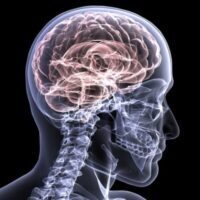Factors Associated with Symptom Reporting in U.S. Service Academy Cadets and NCAA Student Athletes without Concussion: Findings from the CARE Consortium
Caccese JB, Iverson GL, Hunzinger KJ, Asken BA, Clugston JR, Cameron KL, Houston MN, Svoboda SJ, Jackson JC, McGinty GT, Estevez CA, Susmarski AJ, Enrique A, Bryk KN, Broglio SP, McAllister TW, McCrea M, Pasquina PF, Buckley TF, CARE Consortium Investigators. Sports Med. 2021 Jan 11. doi: 10.1007/s40279-020-01415-4. Online ahead of print
https://link.springer.com/article/10.1007/s40279-020-01415-4
Take-Home Message
A person’s preexisting condition (insufficient sleep, stress) may mimic symptoms associated with postconcussional syndrome (PCS). Medical professionals need to consider an individualized approach to examining a patient’s symptom reporting before and after a concussion.
Background
Medical professionals often use symptom reporting and time of symptom resolution to diagnose and manage concussions, respectively. Though many athletes have symptom resolution within a short time frame, some athletes report symptoms weeks to months following a concussion. The International Classification of Disease, 10th Revision (ICD-10) uses the term postconcussional syndrome (PCS) to describe persistent symptoms following a concussion. However, PCS can be difficult to determine because many other factors (e.g., insufficient sleep, mental health conditions, or stress) can contribute to PCS-related symptoms. Therefore, it is important to understand how often healthy, physically active individuals may meet the criteria for PCS and why.
Study Goal
The authors evaluated how often military cadets and student athletes without a recent concussion met PCS diagnostic criteria.
Methods
The NCAA-DOD CARE Consortium assessed 12,039 cadets (24% female; ~19 years of age) and 18,548 student-athletes (45% female; ~19 years of age). Each participant completed a demographic health history form and the Sport Concussion Assessment Tool – 3rd edition (SCAT3). Then, the authors used the SCAT3 symptoms to see who met the symptom criteria for PCS. To meet the PCS criteria, participants reported at least one symptom in at least 3 of the following categories: physical, cognitive, emotional, or insomnia.
Results
Overall, 11 to 28% of the cadets or NCAA student-athletes met the PCS criteria. Over half of the participants reported at least 1 symptom at baseline. For both cadets and student athletes, fatigue/low energy was the most commonly reported symptom. A participant who reported insufficient sleep (less than 5 hours) before baseline testing or a preexisting condition (mental health problems) was more likely to meet PCS criteria. Freshman cadets or freshman cadets that were tested during basic training were also more likely to meet the criteria for PCS.
Viewpoints
In the absence of concussion, 1 to 3 out of 10 cadets or student-athletes reported enough symptoms to meet the PCS criteria. In general, someone who reported less than 5 hours of sleep was 2.5 to 3 times more likely to meet PCS criteria than someone sleeping 7 to 8.5 hours. Further, those with preexisting conditions were 1.7 to 5 times more likely to meet the criteria for PCS. Lastly, freshman cadets and cadets who were tested during cadet training were more likely to report symptoms at baseline that mimicked PCS, which suggests that cadets may have been physically and mentally stressed when taking the SCAT3.
Clinical Implications
Medical professionals should be aware of the factors that can contribute to altered symptom reporting during concussion baseline testing. Assessing symptoms before and after a concussion diagnosis should be interpreted on an individual basis and consider preexisting conditions, amount of sleep, and life stressors to avoid mislabeling someone with PCS. Further, medical professionals should consider the best time for baseline testing when physical and mental stress is not heightened, and participants can maintain a healthy sleeping pattern.
Questions for Discussion
Do you consider stress and sleep levels when you choose the timing of concussion baseline testing? What types and how many symptoms are your athletes reporting at baseline?
Related Posts
- Females at Risk of Protracted Concussion
- 9-Point Survey to Determine Risk of Persistent Postconcussion Symptoms in Pediatric Population
- Comprehensive Services Improve. Care for Adolescents with Persistent Postconcussive Symptoms
Written by: Jane McDevitt
Reviewed by: Jeffrey Driban



I am a ATS and I never thought about sleep deprivation and concussion symptoms. I now realize that when taking concussion baselines especially in college age individuals in the university setting as an Athletic Trainer, we need to be more cognizant of sleep and stress. I also think it may be important to look at this for practice and game play. If this data can be similar to PCS, how can this be applied to injury prevention and how to help college athletes prevent injuries during the times they lack sleep and have increased stress.